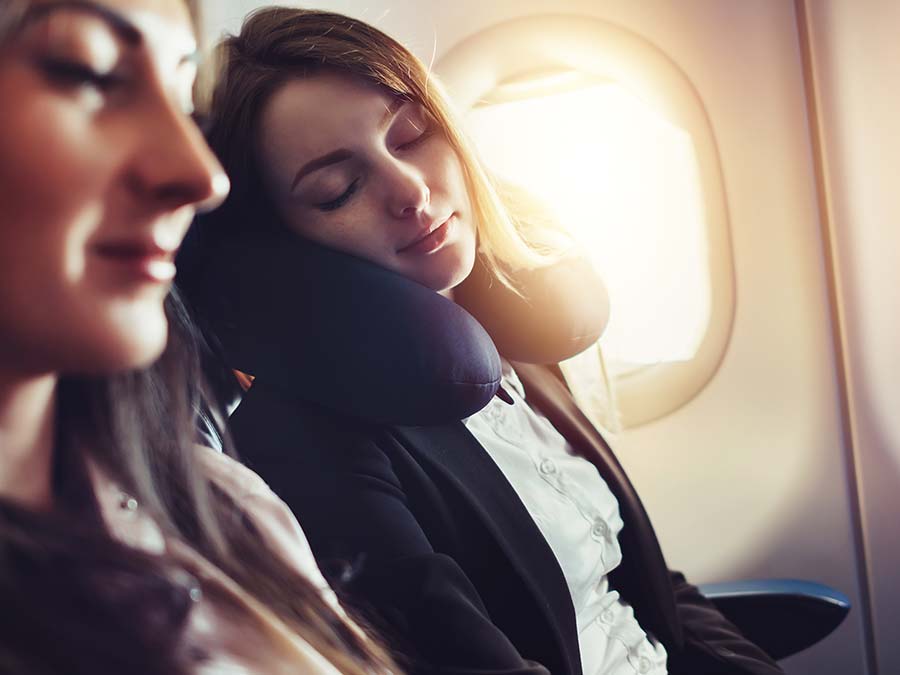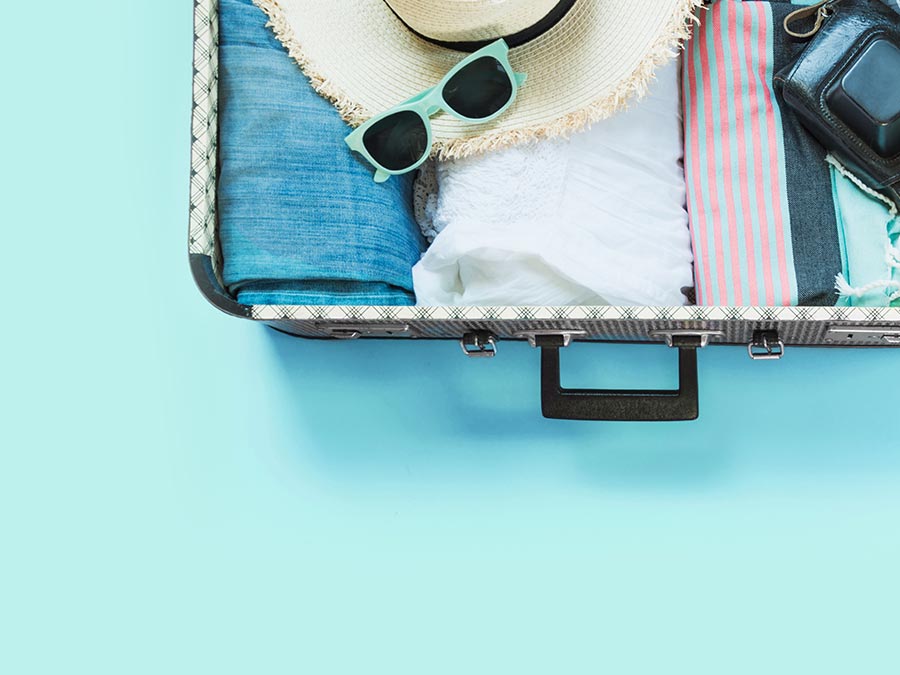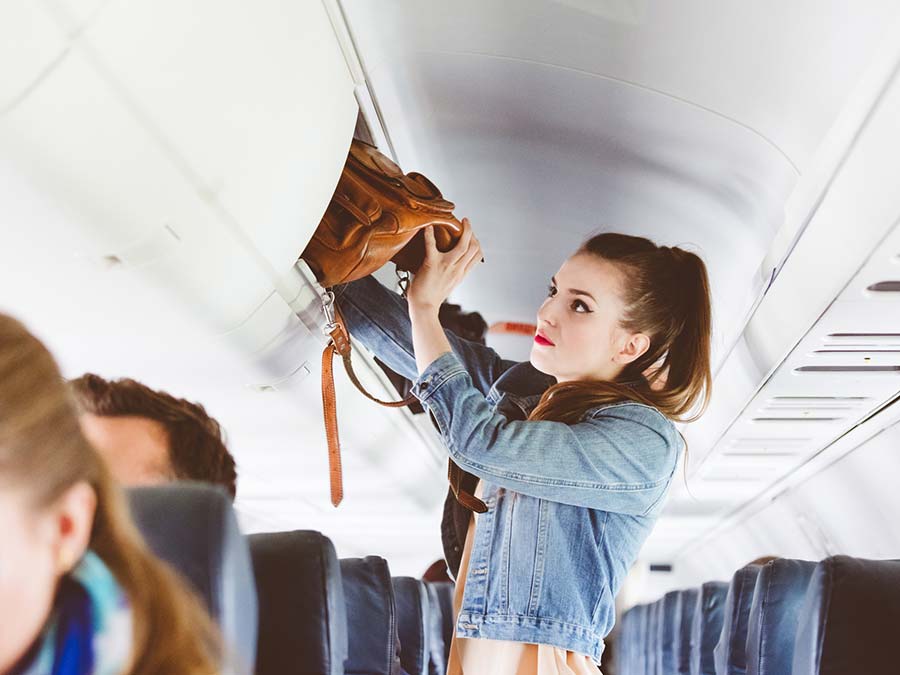
Carry-on luggage packing tips
Traveller A hasn’t thought carefully about their carry-on bag. They check in for their flight and find their backpack is a few kilograms overweight, so frantically start reorganising their luggage at the counter.
They get to security, and realise they haven’t separated their toiletries from the rest of their luggage. They hold up the queue while digging around for their toothpaste, moisturiser and mouthwash. Most of these items are then binned by security, because they exceed the container limits for liquids and gels on their flight.
Finally, Traveller A boards the plane. They sink into their seat and realise they left their earplugs, book and other creature comforts in their checked bag, and the 15-hour flight to Los Angeles has only just begun!
On the other hand, Traveller B has planned their carry-on luggage like clockwork. They breeze through check in, waltz confidently through security, and settle into their seat, ready for a relaxing and comfortable journey.
Airports can be stressful enough without agonising over carry-on luggage. Here are a few carry-on luggage tips to help you pack for success.
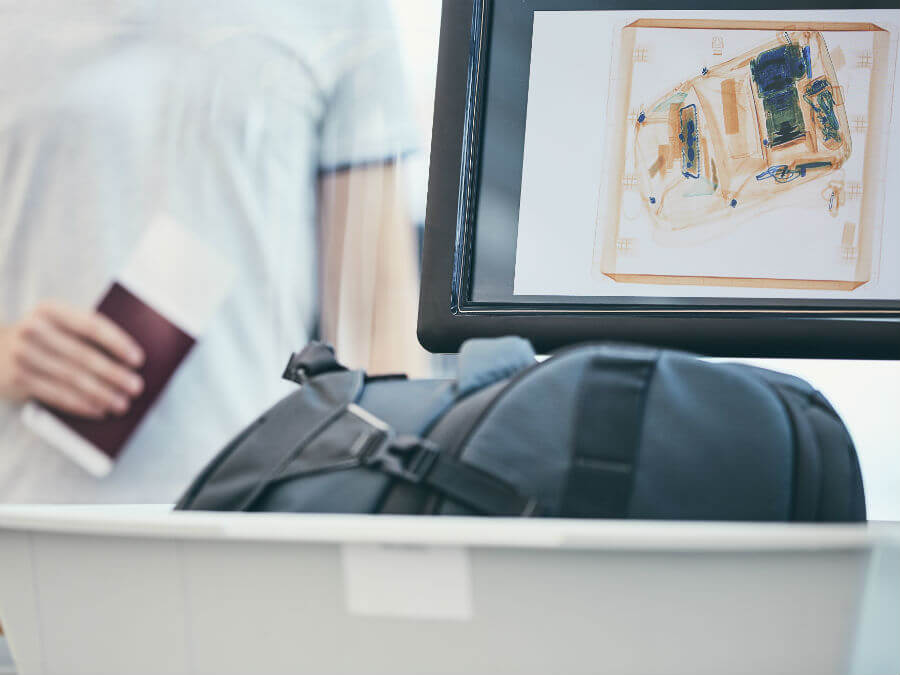
Carry-on luggage rules
If you’re confused about what you’re allowed to bring on the plane, you’re not alone; carry-on rules are constantly changing and can differ between airlines.
For example, in August 2019, Qantas and Virgin Australia restricted any Apple MacBook laptops from flying in checked luggage due to a battery issue. At the same time, Singapore Airlines restricted older generation 15-inch Apple MacBook Pro laptops from flying with them at all, and Air New Zealand advised against packing them.
As baggage rules and regulations change so frequently, it’s always a great idea to check your airlines website before packing your bags.
What’s affected by carry-on rules?
As well as the size and weight of your bag, there are general categories of items that are regulated in carry-on luggage:
- Sharp objects
- Liquids
- Aerosols
- Gels
- Powders
- Technology devices (e.g. laptops, tablets, eReaders and mobile phones)
- Medicine
Some of these have specific definitions, which are outlined on the Australian Border Force website.
Liquids: A substance that is liquid at room temperature (e.g. mouthwash)
Aerosols: A substance that is kept under pressure (e.g. spray deodorant)
Gels: A jelly-like substance (e.g. lip gloss)
Powders: Fine dry particles produced by grinding, crushing or disintegration of a solid substance (e.g. salt)
We’ll cover liquid, aerosol, gel and powder restrictions a little later on in this article.
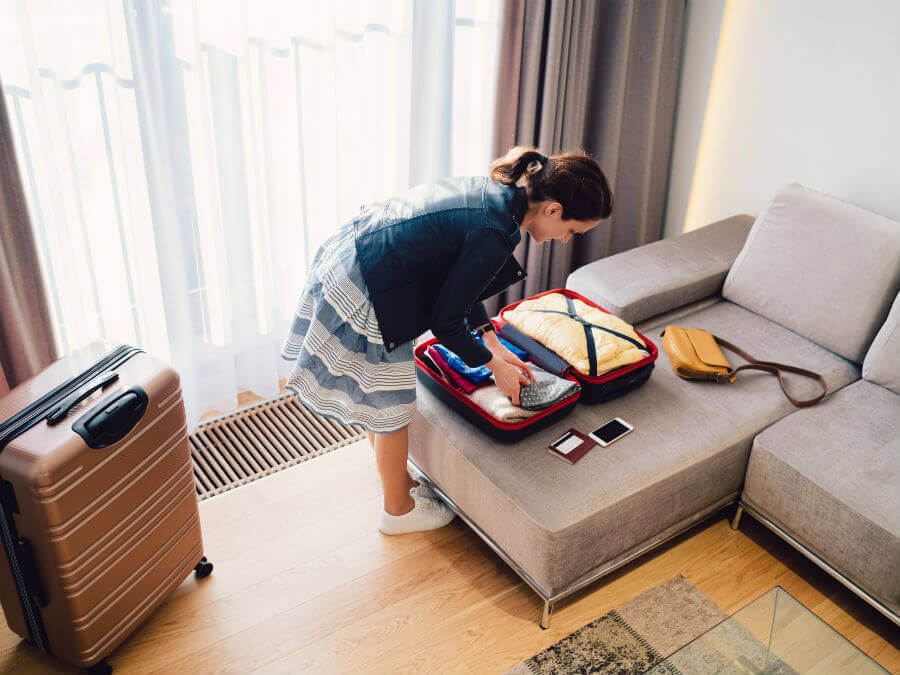
Common items that are restricted
Let’s look at a few items that are either banned or restricted with quantity limits in cabin luggage.
Banned
(According to Virgin Australia’s restrictions as of September 2019):
- Cricket bats
- Scissors with blades longer than 6cm
- Golf clubs
- Snooker cues
- Cable ties
- Screwdrivers
Restricted with quantity limits
(According to the Australian Border Force website as of September 2019):
- Shampoo
- Mouthwash
- Oils
- Perfume
- Hairspray
- Shaving cream
- Lip gloss
- Hair gel
- Toothpaste
- Conserves
- Some powdered deodorant
- Sand
- Salt and salt scrub
We’ll outline the quantity restrictions of these items later in this article.
Common items that may be permitted
(According to Virgin Australia’s restrictions as of September 2019):
- Knitting or crochet needles
- Disposable or safety razors
- Pointed nail files and nail clippers
- Blunt-ended scissors with blades shorter than 6cm
It’s almost impossible to create a complete list of restricted carry-on luggage items. Remember, airport security staff have the final say on what’s permitted on the plane - arguing with them will only delay you for longer.
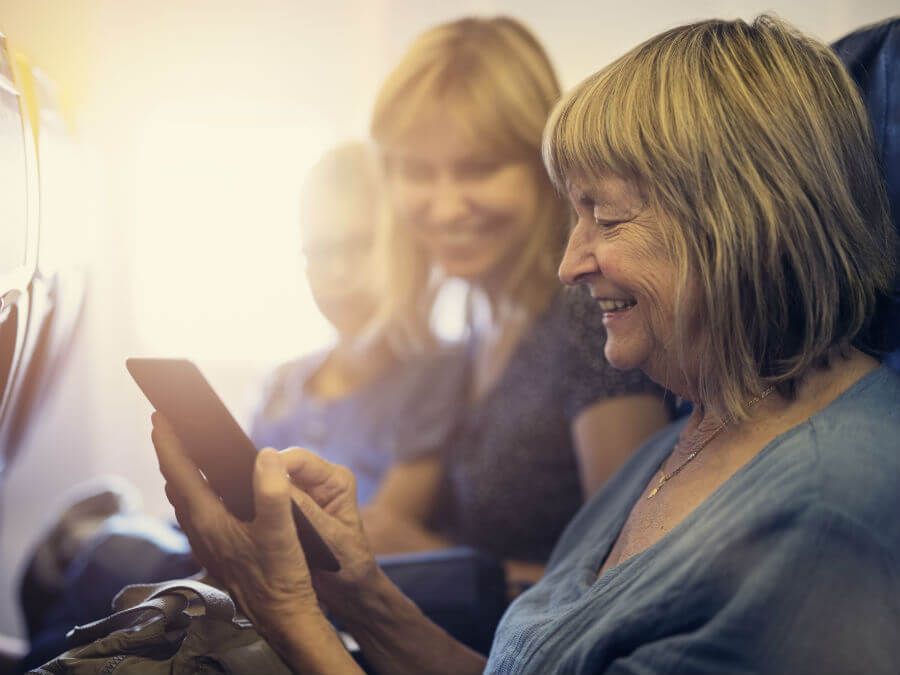
Electronic devices in carry-on bags
Electronic devices can take the sting out of a long-haul flight, and thankfully, most of them are permitted in carry-on bags. For example, Air New Zealand lists the following hand-held electronics as permitted in the cabin:
- eReaders
- Smartphones
- Tablets
- Laptops
- Bluetooth headphones
- Portable CD and DVD players
- Electronic games consoles
Just remember to switch your devices to Flight Mode and follow the instructions of the cabin crew during takeoff and landing.
Toiletries in cabin luggage
Toiletries are some of the most common trip-ups for travellers, because they often fall into the categories of liquids, aerosols, gels and powders. If you’re packing these items in carry-on bags, they should generally be:
- Packed in individual containers no larger than 100ml each
- All containers placed in a resealable transparent plastic bag (e.g. sandwich bag) no larger than one litre in volume
- This bag should be presented separately at security screening
- Only one bag per passenger
It’s important to note that many of these restrictions don’t apply if you pack these items in your checked luggage. So if you’re in doubt about what you’re allowed to take overseas, and you don’t absolutely need to carry toiletries with you on the plane, consider packing it in your checked luggage.
Medication in carry-on luggage
If you’re travelling with medication, it’s a good idea to pack it in your carry-on bags in case you’re separated from your checked luggage when you arrive. But are there restrictions to what you can pack?
Most airlines will require your medication to be marked with a professionally printed label or manufacturer’s name. If you’re travelling with medical sharps, it’s best to carry a letter from your GP verifying your need for these instruments.
Again, check with your carrier well before your departure date so you can plan accordingly. You should also do some research ahead of travel to check whether your medication is legal at your destination.
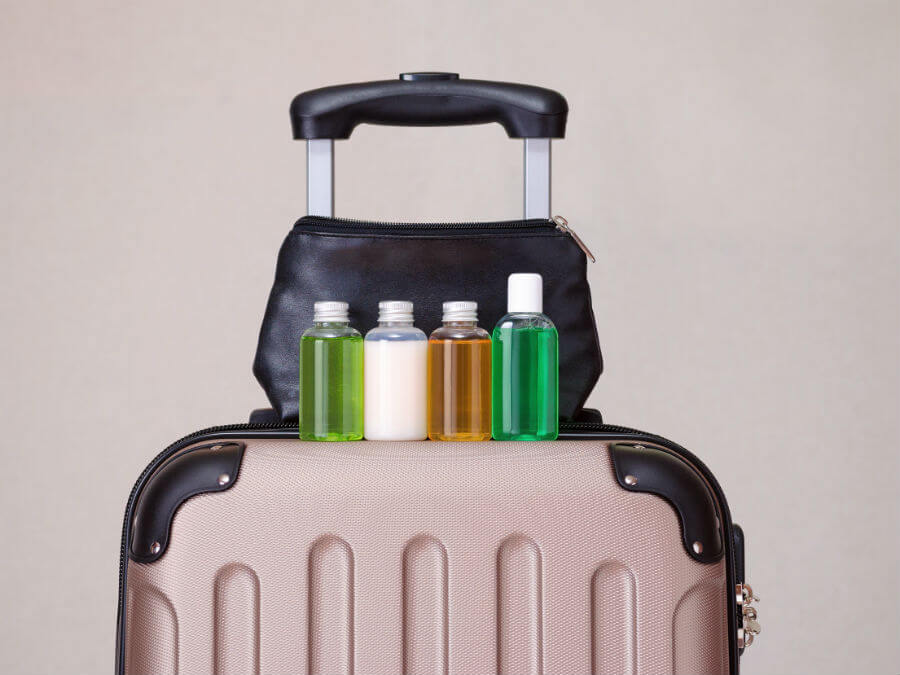
10 carry-on packing tips
Now that you’re confident in what you’re allowed to take on the plane, it’s time to start your holiday packing list and prepare your carry-on strategically. Here are ten carry-on packing tips to simplify your journey.
1. Separate your liquids
Your liquids, aerosols, gels and powders should be presented separately at the security screening, in a transparent plastic bag no larger than one litre in volume.
2. Separate your devices
Another piece of security screening 101; remember to remove your laptop from your bag so it can be screened separately. Pack it at the top or in its own compartment so it’s easy to remove when required.
3. Use packing cubes
Packing cubes can compartmentalise your bag, making it easy to find specific items in a hurry and save space.
4. Pack heavy items over the wheels
If you’re packing a small bag with wheels, load the heavier items over the wheelbase. This will help prevent your bag from toppling over and make it easy to maneuver through the airport.
5. Wear heavier items
Avoid stuffing that heavy jacket into your bag, which can end up taking up all the room in your carry-on. Either wear or carry bulkier clothing; this won’t be considered in your carry-on allowance.
6. Decant cosmetics
Bottles that are two-thirds empty can end up wasting a lot of space. Remember your liquid allowance and decant your cosmetics into smaller containers if appropriate.
7. Use the space inside your shoes
Taking a spare pair of shoes in your carry-on luggage? Maximise space by packing items inside them.
8. Use airport measuring bays
If you’re unsure whether your bag meets the size and weight requirements for carry-on luggage, don’t wait until the check-in counter to hear the news. Many airports have measuring bays where you can double check your bag, in case you need to move some items into your checked luggage.
9. Pack spare clothes
If worst comes to worst and you’re stuck without your checked luggage, you’ll be thankful you packed a spare set of clothes in your carry-on bag.
10. Pack high-value items
High-value items like travel documents, sunglasses, jewellery and cash are all best kept with you in the cabin, especially as some of them may not be covered by your travel insurance if packed in checked luggage.
In-flight theft might sound unlikely, but it certainly happens. Remember to avoid leaving your expensive items unattended while sleeping, going to the bathroom or stowing your luggage. Ask a friend or family member to keep an eye on it if you’re sleeping or away from your seat. Or if you’re travelling solo, consider investing in travel lock to keep your belongings secure.
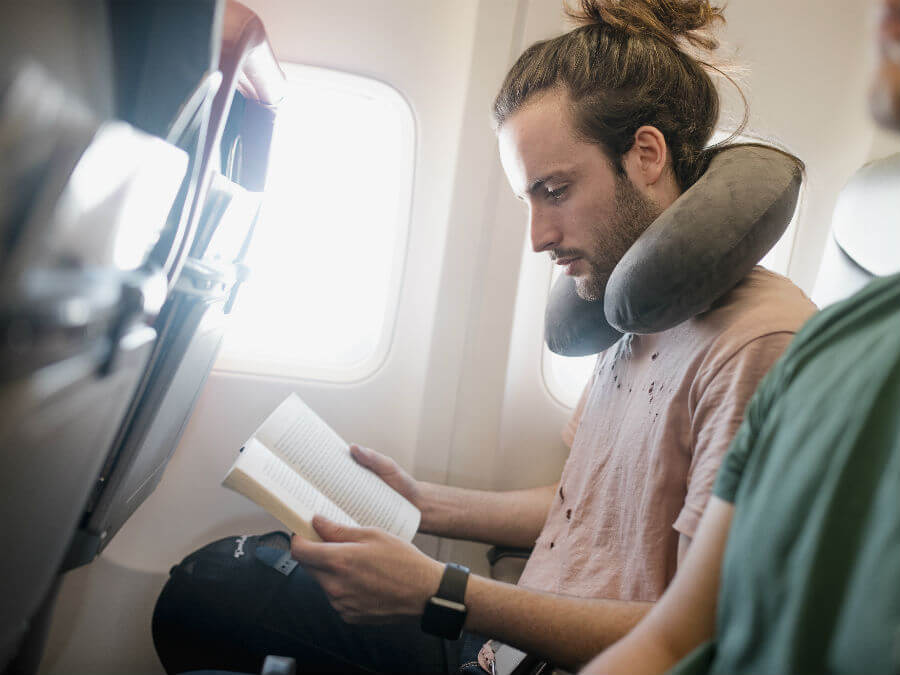
Things to make your flight more comfortable
Finally, don’t forget to pack the creature comforts that will make your flying experience as enjoyable as possible, so you can arrive at your destination ready for adventure! Consider packing:
- Snacks and a refillable water bottle
- Noise cancelling headphones
- Compression socks
- Entertainment (such as books, magazines and tech devices loaded up with music, podcasts, movies, etc.)
- Phone charger (some flights have power ports built into the seat)
- Neck pillow
- A large scarf that can double up as a blanket
- Eye mask and ear plugs
- Eye drops
- Toothbrush and toothpaste
- Moisturiser and lip balm to keep skin hydrated
- Sheet mask (a great skin saver for long haul flights)
- Tissues and wets wipes (particularly if travelling with toddlers)
- Copy of itinerary (simplifies immigration procedures)
- Pen (for completing immigration card)
- A small tote bag that you can fill with your in-flight essentials and leave under the seat, whilst your carry-on bag case is stored in the overhead locker
Things to always pack in your carry-on
There are also a few essential items that you shouldn’t forget to pack. Double check that all of these are accounted for before leaving for the airport:
- Passport
- Driving license
- Visas (if necessary)
- Itinerary, including accommodation details
- Boarding passes
- Travel insurance documents
- Medication
- Bank cards and cash
The content of this article is general and provided for information purposes only. Southern Cross Travel Insurance (SCTI) doesn’t guarantee or warrant the accuracy, completeness or currency of any article.
This article may contain hyperlinks to other websites owned or operated by third parties, or references to third party products or services. SCTI isn’t responsible for, and makes no recommendation about, the content or accuracy of any third party website, or for the suitability or performance of any product or service. The inclusion of a link in this article doesn’t imply that SCTI endorses the website or third party product/service.



